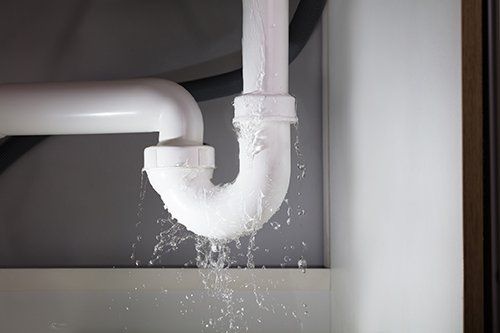Reveal the Most Frequent Roots of Leakage Inside The House
Reveal the Most Frequent Roots of Leakage Inside The House
Blog Article
Just how do you really feel in regards to Most Common Causes of Leaky Pipes?

Leaks not just trigger waste of water however can additionally cause unnecessary damage to your residence and promote undesirable organic growth. Water leakages could go unnoticed since most of the pipework in our home is concealed. By recognizing and also looking for daily circumstances that create leaks, you can secure your house from future leaks and unneeded damages. Today, we will certainly check out six leak creates that might be creating your pipelines to trickle.
Encroaching origins
The majority of water leakages start outside your house as opposed to inside it. If you notice an abrupt decrease in water stress, claim in your tap, require time to go out as well as analyze your yard. You might see damp patches or sinkholes in your backyard, which may suggest that tree origins are attacking water lines causing water to permeate out. You can have your plumber look for intrusion, especially if you have trees or bushes near your residential or commercial property.
Rusty water supply
As time passes by, your plumbing system ages as well as corrosion such as rust might start gnawing the pipes. This could be the source of discoloration or warping on your pipes. This requires an inspection with your plumber promptly. Think about changing the pipelines considering that they are at a higher danger of deterioration than the newer designs if our plumbing system is old.
Defective Pipeline Joints
Pipeline joints can weaken over time, resulting in water leakages. If you have loud pipelines that make ticking or banging noises, specifically when the warm water is transformed on, your pipeline joints are most likely under a lot of pressure.
Immediate temperature modifications.
Severe temperature level adjustments in our pipelines can create them to broaden as well as acquire all of a sudden. This expansion as well as tightening might create cracks in the pipes, specifically if the temperature are below freezing. It would be best if you watched on just how your plumbing functions. The visibility of the previously mentioned circumstances often indicates a high threat.
Poor Water Connectors
Sometimes, a leak can be triggered by loose hose pipes as well as pipes that supply your devices. Typically, shifting is what creates the loosened water Links. You might find in the case of a cleaning maker, a hose might spring a leak because of trembling throughout the spin cycle. In case of a water connections leak, you might discover water running straight from the supply line or puddles around your home appliances.
Obstructed Drains
Blocked drains could be irritating and also inconveniencing, yet they can often wind up triggering an overflow resulting in burst pipelines. Maintain getting rid of any type of products that may go down your drains pipes that could block them to prevent such troubles.
All the above are causes of leaks but not all water leaks result from plumbing leakages; some leaks could originate from roofing leakages. All leakages need to be fixed promptly to stay clear of water damage.
Leakages not only cause waste of water but can likewise create unneeded damage to your residence and promote undesirable natural growth. By looking as well as recognizing for everyday scenarios that trigger leakages, you can secure your residence from future leaks as well as unneeded damage. Today, we will look at six leak triggers that might be causing your pipelines to trickle.
At times, a leak can be triggered by loose pipes as well as pipes that supply your home appliances. In instance of a water connections leak, you might see water running straight from the supply line or pools around your devices.
How To Check For Water Leak In Your Home
How To Check for Leaks
The average household's leaks can account for nearly 10,000 gallons of water wasted every year and ten percent of homes have leaks that waste 90 gallons or more per day. Common types of leaks found in the home are worn toilet flappers, dripping faucets, and other leaking valves. These types of leaks are often easy to fix, requiring only a few tools and hardware that can pay for themselves in water savings. Fixing easily corrected household water leaks can save homeowners about 10 percent on their water bills.
To check for leaks in your home, you first need to determine whether you're wasting water and then identify the source of the leak. Here are some tips for finding leaks:
Take a look at your water usage during a colder month, such as January or February. If a family of four exceeds 12,000 gallons per month, there are serious leaks.
Check your water meter before and after a two-hour period when no water is being used. If the meter changes at all, you probably have a leak.
Identify toilet leaks by placing a drop of food coloring in the toilet tank. If any color shows up in the bowl after 10 minutes, you have a leak. (Be sure to flush immediately after the experiment to avoid staining the tank.)
Examine faucet gaskets and pipe fittings for any water on the outside of the pipe to check for surface leaks.
Undetected water leaks can happen without the home or business owner even realizing. If you suspect a water leak, but not able to find the source. It is time to contact a professional water leak detection service, The Leak Doctor.
How To Find a Water Leak In Your Home
https://www.leakdoctor.com/blog/How-To-Check-For-Water-Leak-In-Your-Home_AE197.html

I came across that write up on How to detect water leaks in your home when scouting around the search engines. Do you know about someone else who is serious about the topic? Do not hesitate to promote it. Thank you for your time. Kindly come by our blog back soon.
Superior service awaits. Report this page